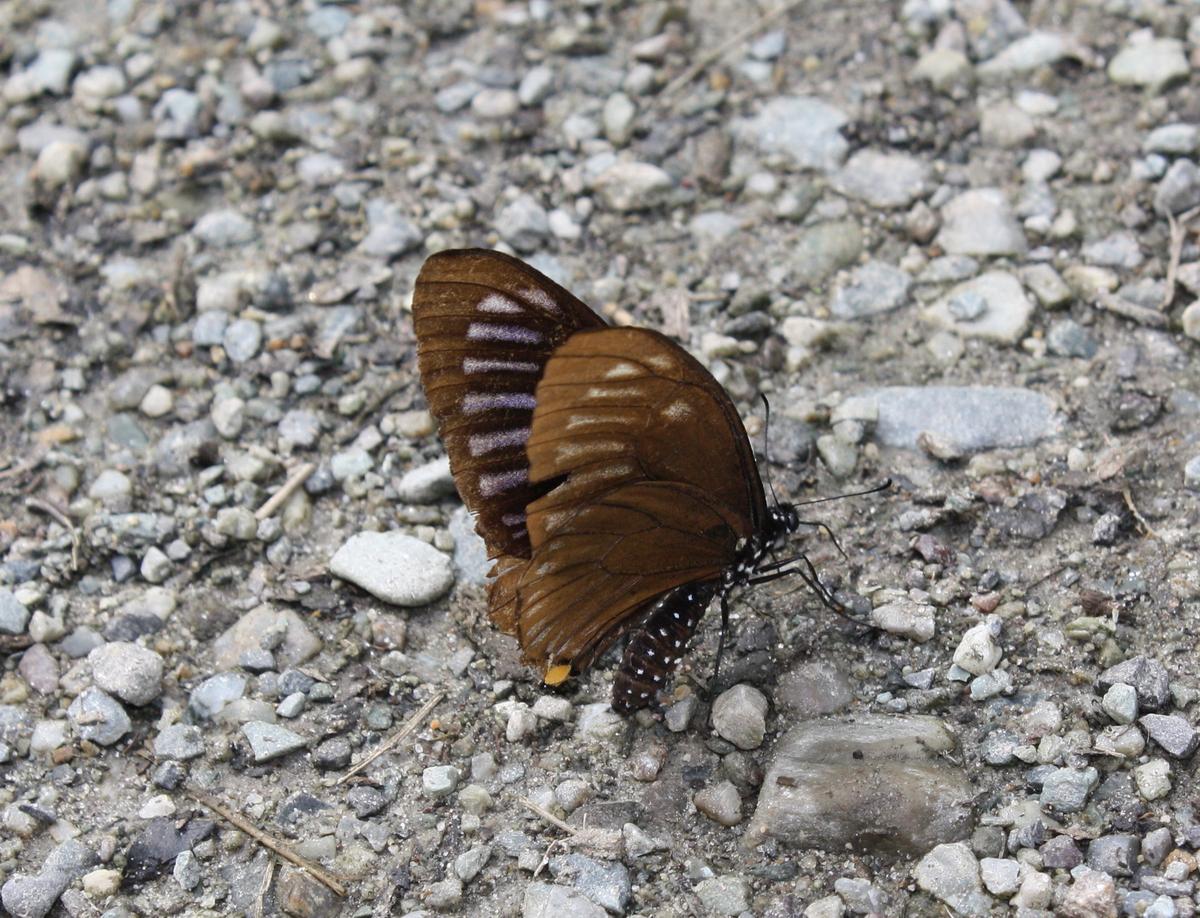
The Paris peacock (Papilio paris) is a species of swallowtail butterfly found in India’s northeast.
| Photo Credit: Special arrangement
The overexploitation of 25 species of host plants valued for their medicinal properties threatens the swallowtail butterflies in the forest habitats of a part of Assam often referred to as the “citrus belt of the world”, a new study has found.
The study, conducted in the Bodoland Territorial Region on the northern bank of the Brahmaputra River, also underscored illegal cattle farming within the protected areas, agriculture and tea cultivation near the habitats, illegal tree felling, and pesticide use to be among the crucial factors contributing to the decline in the number of these butterflies.
Kushal Choudhury of Bodoland University’s Department of Zoology is the author of the study, which was published in the Journal of Threatened Taxa.
“The decline of swallowtail butterflies in forest habitats, which was not a major concern about two decades ago, made the International Union for Conservation of Nature mark them as globally endangered,” he said.
India hosts 77 of the 573 swallowtail butterfly species recorded across the world so far. The International Union for Conservation of Nature designated the northeastern part of the country, where 69 species have been recorded, a ‘swallowtail-rich zone’ under the Swallowtail Conservation Action Plan.
Dr. Choudhury’s study documented 4,267 individuals belonging to 35 species representing eight genera. Three are endemic to the region while 12 enjoy federal protection.
“Butterflies are valuable indicators of the environment, whose health can influence their presence, abundance, and diversity. The findings suggest that the studied landscape [in the Bodoland Territorial region] is crucial in supporting larval host plants, adult resources of swallowtail butterflies, and other abiotic factors,” he said.
The Bodoland Territorial Region is a Sixth Schedule area covering 8,970 sq. km. About 40% of it is covered with forests, mostly toward the border in the north with Bhutan. The butterflies Dr. Choudhury studied in the Region’s Manas Biosphere Reserve were found to count 25 plant species from six families as their essential food sources.
Plant problem

The blue striped mime (Papilio slateri), a species of swallowtail butterfly.
| Photo Credit:
Special arrangement
“Unfortunately, these host plants, valued for their traditional medicinal properties, are being overexploited,” Dr. Choudhury said, noting the absence of two rare species – the Bhutan glory (Bhutanitis lidderdalii) and the Kaiser-i-Hind (Teinopalpus imperialis) – during the survey.
The black-bodied swallowtails were observed to feed on six distinct plant families, including the Rutaceae or citrus. “The study area is situated in the citrus belt of the world and supports 52 varieties of 17 citrus species and six potential hybrid species,” he said, underscoring the link between the citrus plants and the Papilio genus of these butterflies for the development of their larvae.
According to the study, these citrus species are now confined mostly to home gardens or backyard settings instead of wild or semi-wild habitats because the coverage of forested lands has been shrinking and due to overexploitation. “This decline in the wild population of citrus species may be a possible reason for the disappearance of these butterfly species,” the paper read.
The extensive harvesting of three species of plants of the family Aristolochiaceae from the wild was found to have affected the density of the swallowtails belonging to the Atrophaneura, Pachliopta, and Triodes genera. These butterflies have a specialised diet and feed exclusively on plants from this family.
The exploitation of Ligustrum cordatum, a plant used in traditional medicine, has similarly affected the swallowtails of the genus Lamproptera. The scenario is no different for the butterflies of other genera, such as Graphium, which feed on plants of the Lauraceae and Magnoliaceae families.
“The lack of related host plant resources for these species raises concerns about their long-term survival and ecological well-being. Host plants are fundamental to the lifecycle of many species, playing an essential role in their reproduction and sustenance,” Dr Choudhury said.
Published – October 02, 2024 05:30 am IST





